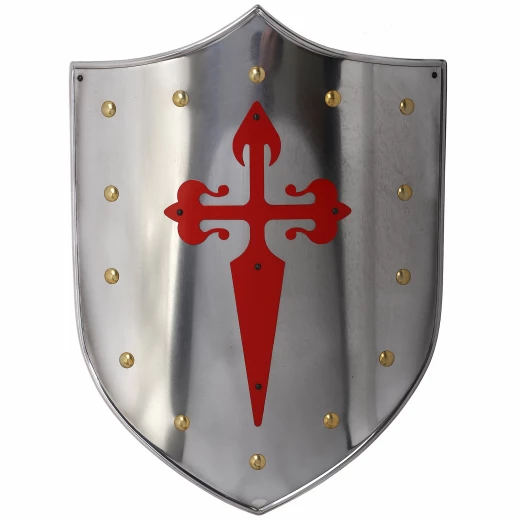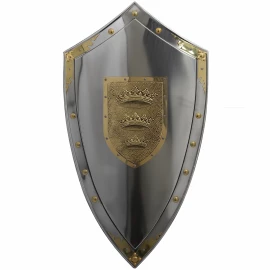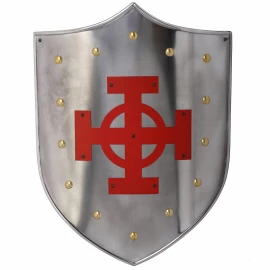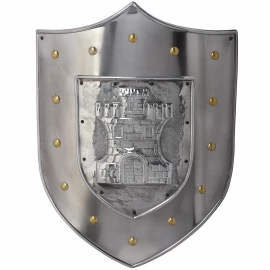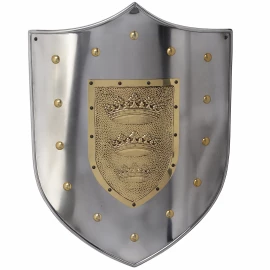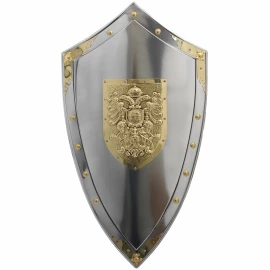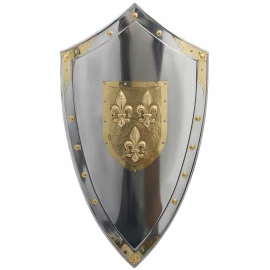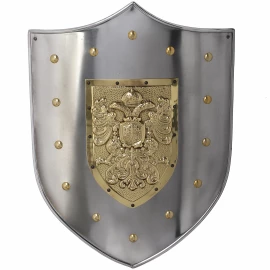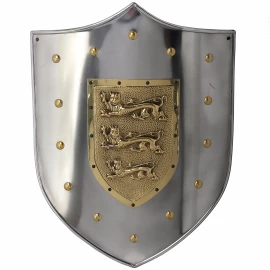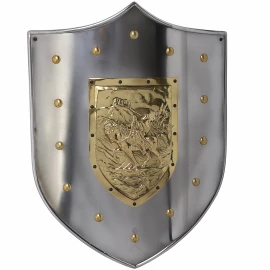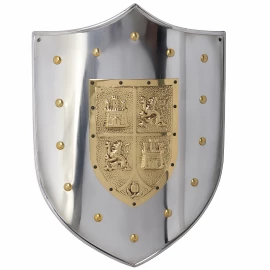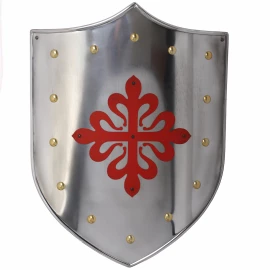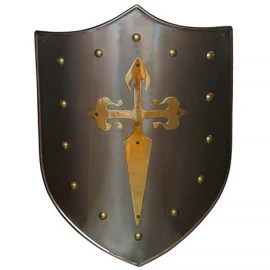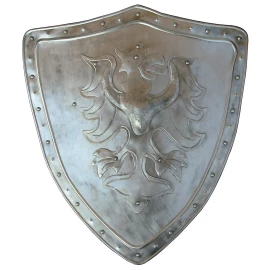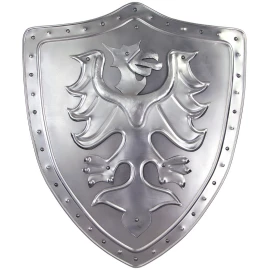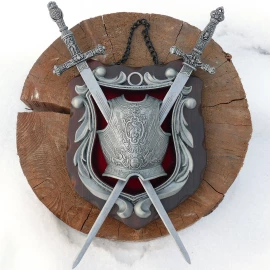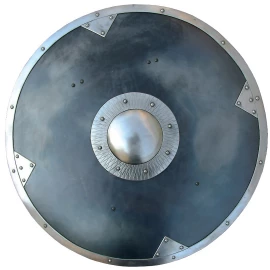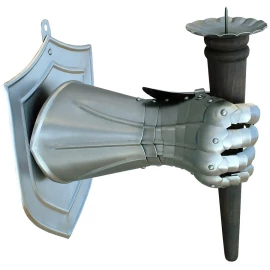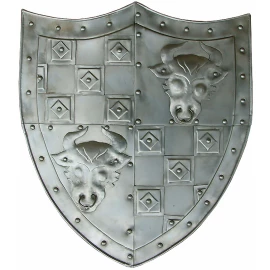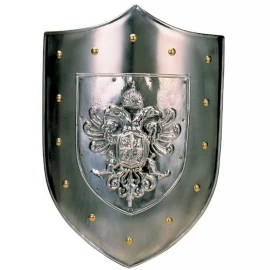Metal shield with Cross of Saint James
Medieval shield, Swiss style with three upper points and finish point at the bottom. It is decorated with the Insignia of the Order of Saint James, one gules Cruz simulating a sword shaped fleur de lis on the handle and arms. More information...
Notify me when the item is in stock.
We will inform you as soon as we stock up.
Metal shield with Cross of Saint James
Please note: This is just an ornamental item, not intended for real use!
- Length 62cm
- Width 47cm
- Thickness measured at the edge 1.21mm
- Weight approx. 2500 g
- Metal chain on the back
- Handmade
- Red St.James Cross in the heart of the Shield.
- Adorned with brass studs along the edge.
High-quality Shield of the Exclusive Collection of “Historic Shields” made by MARTO®
Certificate of Origin and Quality. Made in Toledo.
Most notably, a red Cross of Saint James with flourished arms, surmounted with an escallop, was the emblem of the twelfth-century Spanish military Order of Santiago and Portuguese Military Order of Saint James of the Sword both named after Saint James the Greater. It is also used as a decorative element on the Tarta de Santiago, a traditional Galician sweet.
A shield is a type of personal armor, meant to intercept attacks, or redirecting a hit from a Sword mace, battle axe.
Shields vary greatly in size and in thickness ranging from large panels that protect the user's whole body to small models that were intended for hand-to-hand-combat use.
In prehistory and during the era of the earliest civilizations, shields were made of wood, animal hide, woven reeds or wicker
In the Middle Ages, timber, leather or rawhide and often reinforced with a metal boss, rim or banding.
They were carried by foot soldiers, knights and cavalry.
Shields could be round, oval, square, rectangular, triangular.
The shield was held by a central grip or by straps that went over or around the user's arm.
Often shields were decorated with a painted pattern or an animal representation to identify their army or clan. These designs developed into systematized heraldic devices during the High Middle Ages for purposes of battlefield identification.
Write to our specialist


